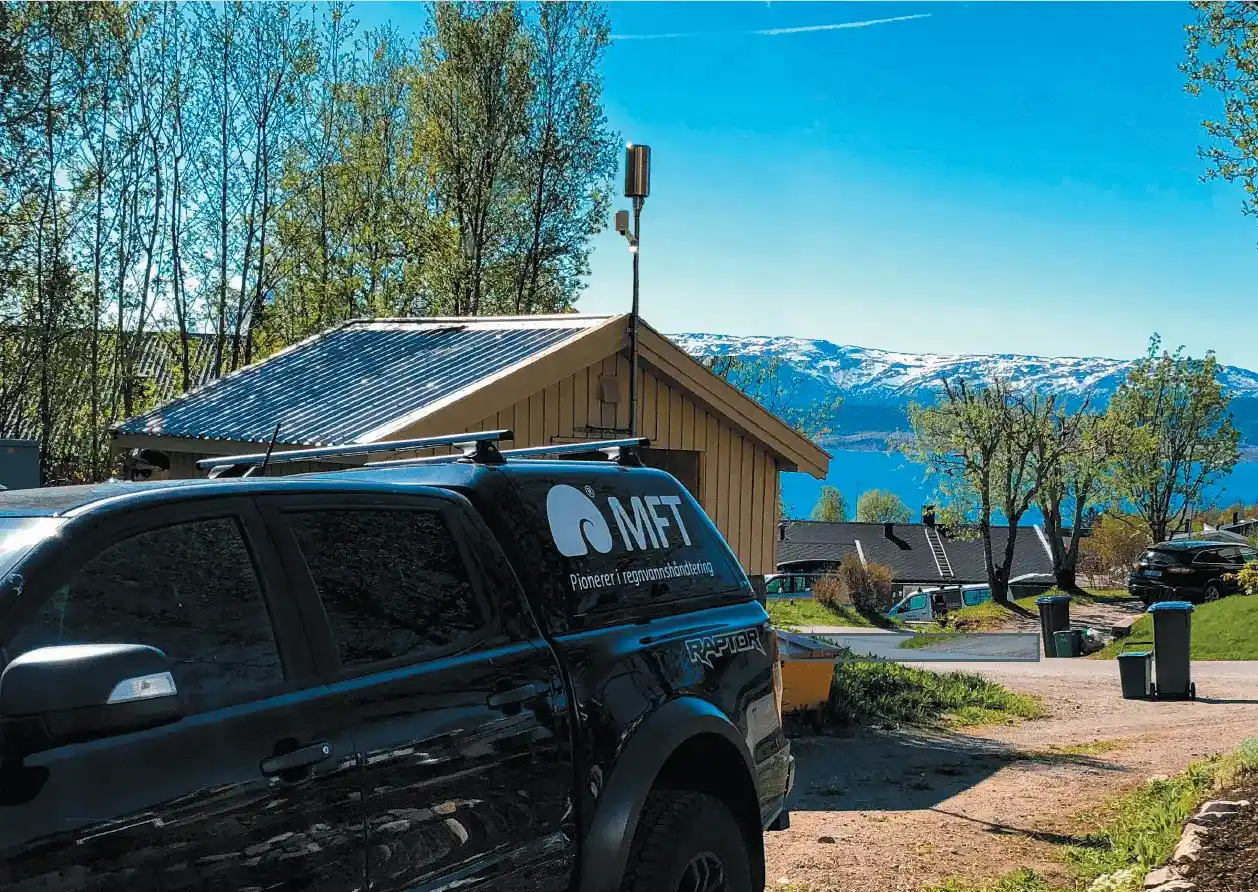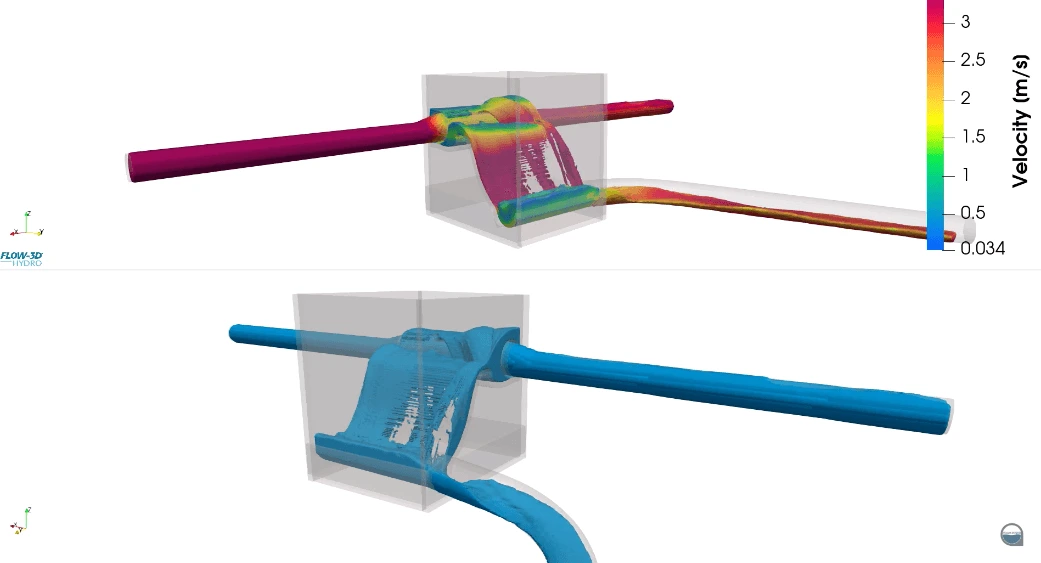Rosim – Insights
Sammenlikning CW doppler og krysskorrelasjon vannføringsmålere
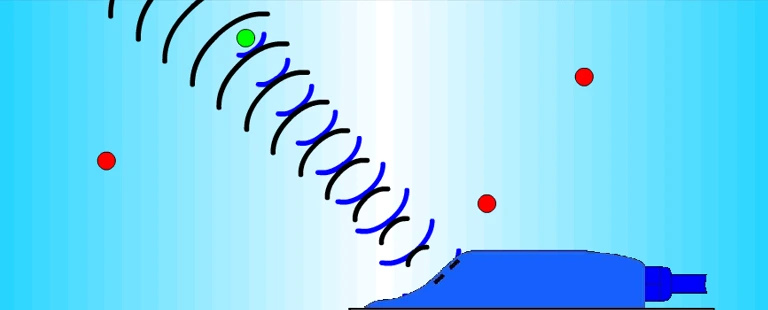
The Norwegian Water Resources and Energy Directorate (NVE) has published a guidance document for those who need measurement data for the planning, modelling, and design of stormwater measures.
You can find the guide here:
https://publikasjoner.nve.no/veileder/2023/veileder2023_01.pdf
Lothar Dören is one of the co-authors of the guide. He previously headed the instrumentation and metering department and served as Head of Water and Wastewater (VA) for the City of Bielefeld in Germany, before moving to Norway and joining Rosim in 2018. At Rosim from 2018 to 2020, he helped develop Rosim’s instrumentation and metering methods and solutions. As a senior engineer at NVE, he works on stormwater and urban hydrology.
Among mobile cross-correlation flow meters, NIVUS offers the PCM4 and the newer NivuFlow Mobile 750. In connection with the work on the guide, a PCM4 flow meter was loaned by Rosim to NVE.
NVE has tested the measuring equipment, and the guide describes the measurement principles and summarises the advantages and disadvantages.
The principle of a continuous-wave (CW) Doppler meter is that the sensor emits sound waves at a constant frequency. The waves are reflected by particles and air bubbles in the water, producing a frequency shift that is used to determine the flow velocity.
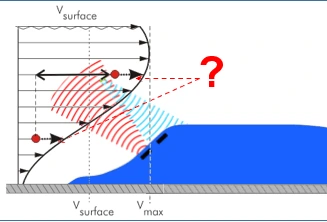
The figure above shows a typical velocity profile for flow in a pipe. The velocity is lower near the pipe invert due to friction between the pipe and the water, then increases higher up in the water column. As the figure indicates, with a CW Doppler you cannot know which of the red particles is being measured—the one with the lower velocity or the one with the higher velocity.
With a CW Doppler, it is not possible to determine where within the flow cross-section the particle reflecting the sound wave is located.
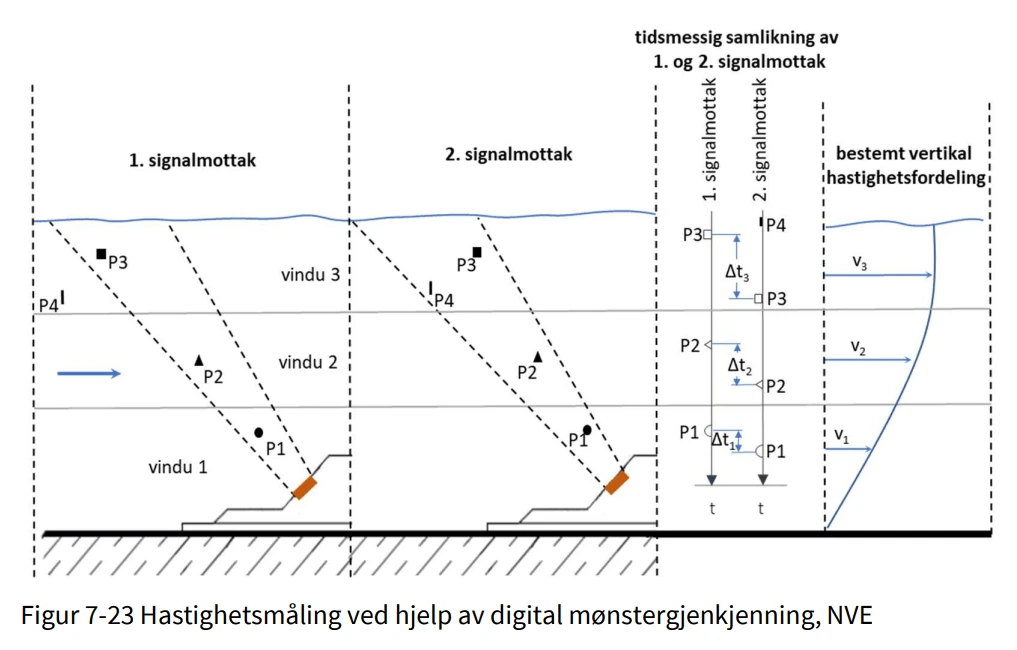
The figure above, from NVE’s guide, illustrates the principle of cross-correlation (digital pattern recognition). An ultrasonic pulse causes particles and air bubbles in the water to return a characteristic echo pattern. By repeating this at intervals of a few milliseconds, changes in particle position and their flow velocity can be determined at different levels (depths). Using this method yields a vertical velocity profile of the flow.
This is what makes cross-correlation, as described by NVE, deliver “significantly lower uncertainty than CW Doppler.”
It is also noted that the CW Doppler meter is “particularly prone to error under surcharging or accelerated flow.” NVE’s guide further specifies that calibration is required for the CW Doppler measurement principle.
Latest posts
- All Posts
- What’s happening?
- Insights
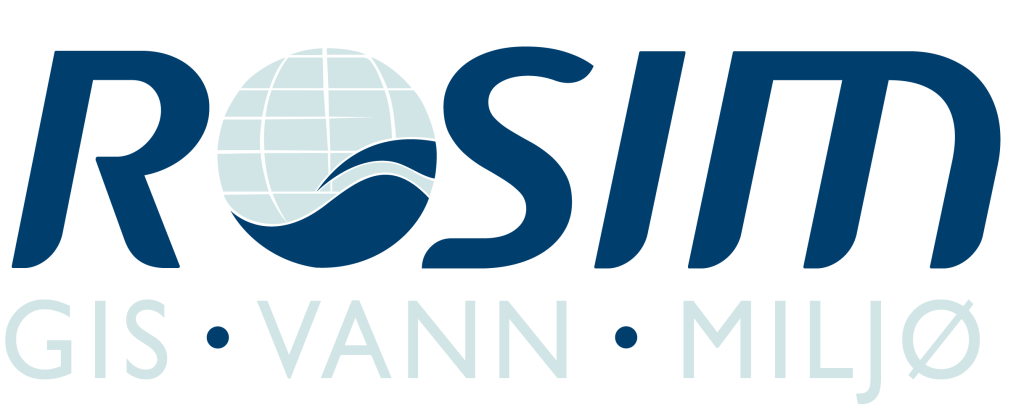
 NO
NO
 SE
SE
